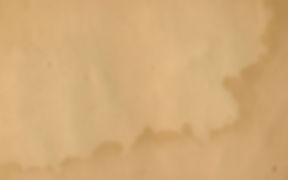
SGT. THOMAS BOYNE-MOH
(1849-1896)
BUFFALO SOLDIER-COMPANY C, 9TH US CALVARY REGIMENT
Sgt. Thomas Boyne was born in Prince George County Maryland in 1849. Little is known about his early years other than the fact he joined the Union Army during the Civil War at Norfolk, Virginia as a member of a Light Artillery Regiment. His unit was transferred to Texas where he mustered out of the Union Army in 1866, only to re-enlist in the regular US Army in the 25th Infantry, where he served for many years in that unit before he was again transferred to the 9th US Cavalry Regiment. It was while he was serving in C company of the 9th Cavalry that he received two awards for bravery, one being the Medal of Honor.
The story: “When Chief Victorio of the Warm Springs Apaches fled the reservation in the early Spring of 1879 and headed for old Mexico, 31 men of the 9th Cavalry Troopers of Company C and 15 men of Company I and two Navajo Scouts commanded by Captain Charles D. Beyer and Lieutenant Henry H. Wright, were ordered out of Ft. Bayard (Silver City) New Mexico on the 17thth of May to intercept the runaways. On the third day of their march, they struck an old trail of the Renegades which was headed for the Mimbres Mountain. Then on the morning of the 20th of May, the Troop descended into a canyon, while deployed in a skirmish line, when they spotted the Apaches atop a peak in front of them busily erecting a breastwork.
It was at this point that the Indians raised a white flag and asked for a parley. Capt. Beyer sent word back to the Apaches that he would meet halfway with Chief Victorio, but the offer was rejected by the Apaches. Then according to Capt. Beyer, the Indians made a “harangue” and all that could be gathered from it all, was, the Apaches simply wanted to be left alone.
THE BATTLE OF MIMBRES MOUNTAIN NEW MEXICO
Growing suspicious, Capt. Beyer directed skirmishers under Lt. Wright to begin moving up the side of the mountain to within 200 yards of the breastworks thrown up by the Apaches. Capt. Breyer then began advancing the balance of his troopers slightly forward and to the right in order to flank the Indians when the Apaches opened fire.
Lt. Wright later wrote: “I was engaged in bringing in a wounded man along with several men when I was surprised by several Warriors who killed my horse and began to surround my small detachment. Sgt. Boyne in command of several Troopers, flanked and gallantly charged the Indians, driving them off”.
Lt. Wright recommended Sgt. Boyne for the Medal of Honor for his heroic actions that day and the recommendation was heartily endorsed by Major Albert P Morrow, who stated “I have seen Sgt. Boyne in action and in every instance he distinguished himself. I cannot speak to highly of his conduct and if ever a soldier deserved the Medal of Honor, Sergeant Boyne does”.
This letter of recommendation was made by Major Morrow because Sgt. Boyne was in two engagements that Spring and early Fall. This one at Mimbres Mountain on the 29th of May, then he was cited again for bravery again at the Battle of Cuchillo Negro River near Ojo Caliente, New Mexico on the 27th of September.
Since no other medals for bravery existed in the US Army in those early years, the Army issued him a Citation for Bravery at Mimbres Mountain and the Medal of Honor for his bravery at Cuchillo Negro River.
Sgt. Thomas Boyne retired from the Army in 1899 because of a disability. He was admitted to the U. S. Soldiers Home in Washington DC in 1890, where he remained until his death the 21st of April, 1896. He is buried there in the US Soldiers’ and Airmen’s Home National Cemetery, in the District of Columbia.


